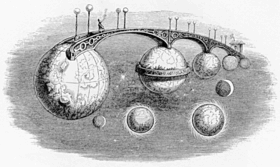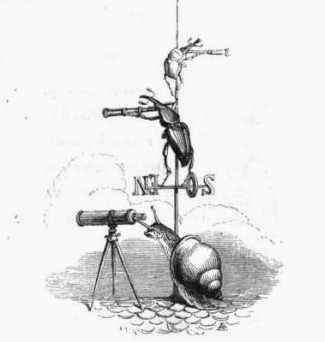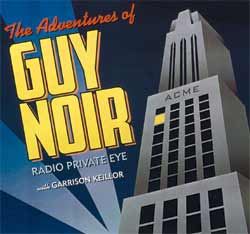

J.J. Grandville
left: illustration from
Un autre monde (1844)
right: "savants astronomes",
illustration from
Scènes de la vie privée et
publique des animaux (1842)
 |
 |
J.J. Grandville left: illustration from Un autre monde (1844) right: "savants astronomes", illustration from Scènes de la vie privée et publique des animaux (1842) |
|
Hélène
Roussel Institut d'Astrophysique de Paris 98 bis, boulevard Arago 75014 Paris France
|
Associate astronomer Teaching: Université Pierre et Marie Curie (Paris 6) |
| research interests |
astronomical software |
key programs |
papers |
path |
temps libre / free time |
| Scanamorphos final version 25 (software for scan observations with Herschel) Scanamorphos tailored to ArTéMiS : version 4 soon available, to hybridize SPIRE and ArTéMiS maps |
|
The
aim
of
my
research
work
is
to
extract
information
on
the
activity
of
galaxies
in terms of massive star formation, and in some cases in terms of non-stellar processes (caused by dynamical perturbations and active nuclei) from observations of the cold and warm interstellar medium, through dust and gas signa- -tures. Dust has a crucial part in the energy budget of galaxies, since it diverts about half the total stellar luminosity in moderately active galaxies, and much more in starbursts. A close association of dust lanes with regions of massive star formation was recognized early on in photographic plates. Extinction prefe- -rentially affects massive and thus young stars for two reasons: they are still surrounded by some of the dense molecular material, that contains a lot of dust, from which they have formed ; and the average ex- -tinction curve features a steep dependence on the inverse wavelength, which implies that dust absorbs more efficiently the ultraviolet radiation of massive stars than the redder radiation of older stars. On the other hand, dust has few spectral signatures, except the broad emission bands produced by poly- -cyclic aromatic hydrocarbons, the broad bands caused by silicate grains (seen mostly in absorption), both of them in the mid-infrared range, and the 2175 Å bump in the ultraviolet extinction curve. Gas lines, even though they carry much less power than dust emission, bring complementary information on density and temperature conditions, optical depths, metal abundances, and excitation sources. My work is concerned mainly with nearby galaxies, where it becomes feasible to separate the emission from distinct regions, and trace it back to various physical processes. Nearby galaxies allow to generalize the knowledge gained from local Milky Way regions by surveying much more diverse environments from a less cluttered perspective, before generating models and predictions for distant galaxies, observed with minimal or no spatial resolution, and generally sparse coverage of the spectral energy distribution. warm molecular hydrogen and PAH excitation: Recent results on this topic, obtained in a large sample of nearby galaxies, can be found in this paper. Molecular hydrogen excited to apparent temperatures above ~100 K emits detectable rotational lines in the mid-infrared. Most hydrogen molecules are too cold to be observed directly through these or other lines, but their warm phase nevertheless contributes a large fraction of the total gas cooling, and traces both radiative and mechanical energy transfers in the interstellar medium. spatially-resolved studies of galaxies: NGC 300, at a distance of only ~2 Mpc, offers the opportunity to study in exquisite detail the inter- -stellar medium in a normal spiral galaxy outside the Milky Way. The main result of a 2005 paper concerns the variations of the extinction law in the line of sight of ionizing stellar clusters, and the relation between these systematic variations and the local geometry of the interstellar medium. nascent starbursts: These peculiar and very rare galaxies were selected to have: 1) far-infrared to centimeter radio conti- -nuum ratios in strong excess with respect to the infrared-radio correlation of star-forming galaxies ; 2) high dust temperatures (implying that the infrared excess cannot be attributed to cirrus-like regions and that the dust is heated by an intense radiation field). These galaxies are thought to host an extre- mely young nuclear burst of star formation (less than a few million years old) that is quasi-instantaneous and isolated in time, after they have been quiescent for a long period. They offer an ideal setting to study the onset of a starburst, unconfused by complex star formation histories generally encountered in clas- -sical starburst galaxies, and the evolution of the dust and gas properties in such environments. The on- -going study makes use of data from Spitzer for diagnostics on the dust and several gas phases, the VLA to constrain the radio continuum emission mechanisms, the IRAM antenna to characterize the cold mole- -cular gas and the PIFS instrument at Palomar for diagnostics on yet other gas phases. The galaxies were selected from the IRAS Faint Galaxy Sample and the VLA NVSS and FIRST radio surveys. proceedings of the conference "Starbursts - from 30 Doradus to Lyman break galaxies" held at the IoA in Cambridge in September 2004 (edition R. de Grijs and R. González Delgado). proceedings of the conference "Infrared diagnostics of galaxy evolution'' held by the Spitzer Science Center in Pasadena in November 2005. See also the papers published in 2003 and 2006. data processing and analysis from infrared space telescopes: ISO (raster imaging and spectral cubes acquired with the ISOCAM instrument) Spitzer (spectral cubes acquired by rasters with IRS, imaging photometry with IRAC and MIPS) Herschel (imaging photometry with PACS and SPIRE) use of observing facilities at other wavelengths: from space: ROSAT (PSPC instrument), GALEX
|
|
~o~
~o~ |
Scanamorphos IDL software to build maps
from scan observations made with bolometer arrays, in
particular with the
PACS and SPIRE photometers onboard the Herschel space telescope (wavelength range of operation: 70 to 500 µm). The prototype software has been developed on SPIRE simulated data and on real data from P-Artemis, an instrument of the same design as one of the PACS subarrays, but operating on the ground (mounted on APEX). After the launch and performance verification of Herschel, it has been extensively tested on both SPIRE and PACS flight data. IDL routines to reduce data and build spectral cubes from the PIFS instrument: near-infrared integral-field spectrograph operating on the Palomar 5 m telescope (code inspired by Tom Murphy's, taking improved care of the distortion corrections and the subtraction of sky lines ; user-unfriendly) |
|
~o~
~o~ ~o~ |
ISOCAM
nearby galaxies guaranteed time programs: ISO, coming after the IRAS all-sky survey, was the first infrared space mission providing sufficient angular resolution to decompose nearby galaxies into distinct entities (nuclear regions, star forma- -tion complexes in spiral arms, interarm regions), thereby allowing correlations between different components of the interstellar medium within galaxies to be investigated. ISO also offered spectro- -scopic capabilities across the mid-and far-infrared, making possible detailed studies of PAHs (polycyclic aromatic hydrocarbons), and of cooling processes in massive star formation regions. SINGS (Spitzer Infrared Nearby Galaxies Survey, P.I. Robert Kennicutt): This survey with the Spitzer telescope has targetted 75 nearby galaxies representative of most types and luminosities (except ultraluminous galaxies) for imaging photometry in the mid- and far-infrared, and for imaging spectroscopy in the mid-infrared, at improved angular resolutions and sensitivities with respect to the previous infrared space mission, ISO. These data have brought a wealth of infor- -mation, at scales of a few hundred parsecs, on the cold and warm interstellar medium of galaxies: dust grains of all sizes (including PAHs), some important gas tracers (forbidden lines such as [NeII], [NeIII], [SIII], [SiII], and rotational lines of molecular hydrogen), and even photospheric emission at 3.5 µm, providing an interesting estimator of the total stellar mass at high sensitivity. As a legacy project, SINGS has publicly released fully processed maps and spectral cubes. KINGFISH (Key Insights on Nearby Galaxies: Far-Infrared Survey with Herschel, P.I. Robert Kennicutt): This program is very much meant as the direct heir of SINGS, completing the spectral energy distribu- -tions and spectroscopic coverage to the far-infrared and submillimeter, giving access to the emission from cold dust (the most important dust component in terms of mass), and to emission lines that radiate away a large fraction of the energy injected into the interstellar gas. KINGFISH also is a legacy project, with similar commitments in terms of data and science public release. |
| Scanamorphos: a
map-making software for Herschel and similar scanning
bolometer arrays (2013, PASP 125, p. 1126-1163) (arXiv:1205.2576) H. Roussel SPIRE imaging of M82: cool dust in the wind and tidal streams (2010, A&A 518, L66) H. Roussel, C. D. Wilson, L. Vigroux, K. G. Isaak, M. Sauvage, S. C. Madden, & SPIRE Nearby Galaxies Astronomy Group (Herschel A&A special issue) Warm molecular hydrogen in the Spitzer SINGS galaxy sample (2007, ApJ 669, p. 959-981) H. Roussel, G. Helou, D.J. Hollenbach, B.T. Draine, J.D. Smith, L. Armus, E. Schinnerer, F. Walter, C.W. Engelbracht, M.D. Thornley, R.C. Kennicutt, D. Calzetti, D.A. Dale, E.J. Murphy & C. Bot The opaque nascent starburst in NGC 1377: Spitzer SINGS observations (2006, ApJ 646, p. 841-857) H. Roussel, G. Helou, J.D. Smith, B.T. Draine, D.J. Hollenbach, J. Moustakas, H.W. Spoon, R.C. Kennicutt, G.H. Rieke, F. Walter, L. Armus, D.A. Dale, K. Sheth, G.J. Bendo, C.W. Engelbracht, K.D. Gordon, M.J. Meyer, M.W. Regan & E.J. Murphy Extinction law variations and dust excitation in the spiral galaxy NGC 300 (2005, ApJ 632, p. 227-252) H. Roussel, A. Gil de Paz, M. Seibert, G. Helou, B.F. Madore & C. Martin The anatomy of star formation in NGC 300 (2004, ApJS 154, p. 253-258) G. Helou, H. Roussel, P. Appleton, D. Frayer, S. Stolovy, L. Storrie-Lombardi, R. Hurt, P. Lowrance, D. Makovoz, F. Masci, J. Surace, K.D. Gordon, A. Alonso-Herrero, C.W. Engelbracht, K. Misselt, G. Rieke, M. Rieke, S.P. Willner, M. Pahre, M.L. Ashby, G.G. Fazio & H.A. Smith Warm dust and aromatic bands as quantitative probes of star-formation activity (2004, A&A 419, p. 501-516) N.M. Förster Schreiber, H. Roussel, M. Sauvage & V. Charmandaris Near-infrared integral field spectroscopy of star-forming galaxies (2004, ApJ 601, p. 813-830) D.A. Dale, H. Roussel, A. Contursi, G. Helou, H.L. Dinerstein, D.A. Hunter, D.J. Hollenbach, E. Egami, K. Matthews, T.W. Murphy, C.E. Lafon & R.H. Rubin Nascent starbursts in synchrotron-deficient galaxies with hot dust (2003, ApJ 593, p. 733-759) H. Roussel, G. Helou, R. Beck, J.J. Condon, A. Bosma, K. Matthews & T.H. Jarrett The relationship between star formation rates and mid-infrared emission in galactic disks (2001, A&A 372, p. 427-437) H. Roussel, M. Sauvage, L. Vigroux & A. Bosma The impact of bars on the mid-infrared dust emission of spiral galaxies: global and circumnuclear properties (2001, A&A 372, p. 406-426) H. Roussel, M. Sauvage, L. Vigroux, A. Bosma, C. Bonoli, P. Gallais, T. Hawarden, S. Madden & P. Mazzei An atlas of mid-infrared dust emission in spiral galaxies (2001, A&A 369, p. 473-509) H. Roussel, L. Vigroux, A. Bosma, M. Sauvage, C. Bonoli, P. Gallais, T. Hawarden, J. Lequeux, S. Madden & P. Mazzei The baryon content of groups and clusters of galaxies (2000, A&A 361, p. 429-443) H. Roussel, R. Sadat & A. Blanchard |
| 2005-07: | Postdoc at the Max-Planck-Institut für
Astronomie |
| 2001-05: |
Postdoc
at the California
Institute of Technology, in the Astronomy department (senior postdoc 2005) |
| 2001: |
PhD of the University Louis
Pasteur of Strasbourg title: Mid-infrared dust emission in spiral galaxies: links with star formation and with barred dynamics institute: Service d'Astrophysique, CEA/Saclay, in the ISOCAM group thesis manuscript in French: thèse.pdf (12.2 Mb) |
| 1997: |
DEA of the University Louis Pasteur and
Observatory of Strasbourg Réduction et analyse des données sur les milieux astrophysiques training period: The baryon fraction in galaxy clusters |
| 1997: |
Ingénieur de l'ENSPS (Ecole Nationale Supérieure de Physique de Strasbourg) |

